10 strange creatures found in the deep sea in 2021
Here is a list of the 10 strangest deep-sea creatures discovered, or announced in 2021.
1. Jellyfish as red as blood

In August, researchers from the National Oceanic and Atmospheric Administration (NOAA) announced the discovery of a completely new and unnamed blood-red jellyfish. According to the researchers, this red jellyfish may belong to the genus Poralia.
It was discovered at a depth of about 700m just off the coast of Newport, Rhode Island. A lot of deep-sea creatures have evolved to be so red because red wavelengths of light cannot travel down to the deep ocean. This means that in this layer of water, red animals will appear to be black because there is no red light to reflect back, thereby helping them to hide better.
2. Glass Octopus

Also in August, researchers from the Schmidt Ocean Institute (SOI) released footage of a rare glass octopus (Vitreledonella richardi) off the coast of the remote Phoenix Islands, an archipelago located more than 5,100 km northeast of Sydney, Australia.
The octopus was originally discovered during a 34-day expedition in the Central Pacific region aboard SOI's Falkor research vessel. Scientists on board discovered the creature using the remote-controlled submarine SuBastian.
Like other "glass" creatures, such as glass frogs and some jellyfish, the glass octopus is almost completely transparent, with only cylindrical eyes, optic nerves, and a digestive tract. is appear.
3. Shapeshifting Fish
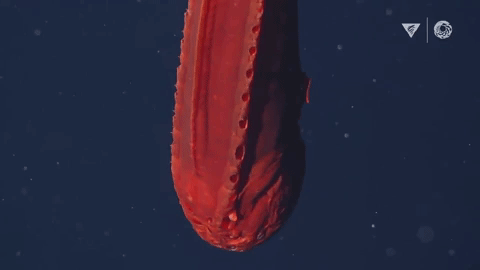
The Monterey Bay Aquarium Research Institute (MBARI) released footage in August showing a bright orange female whalefish (from the order Cetomimiformes) swimming at a depth of about 2,013 meters off the coast of Monterey Bay, California. Called whalefish (whale) because it has a shape similar to the whale we often think of, but much smaller in size, an adult is from 20 to 30cm long.
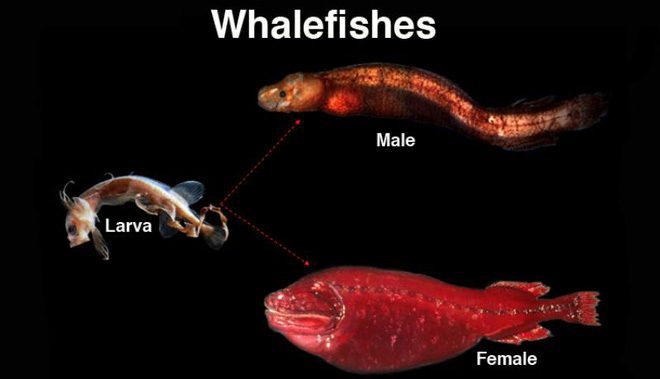
Very little is known about this strange fish as they come in three different shapes from juveniles (sprayfish), males (big-nosed fish) and female fish (whales). The three shapes look so different that scientists at first thought they were three different species. The transformation from juvenile to adult female is thought to be one of the most extreme changes to any vertebrate species.
4. Octopus 'Dumbo Emperor'
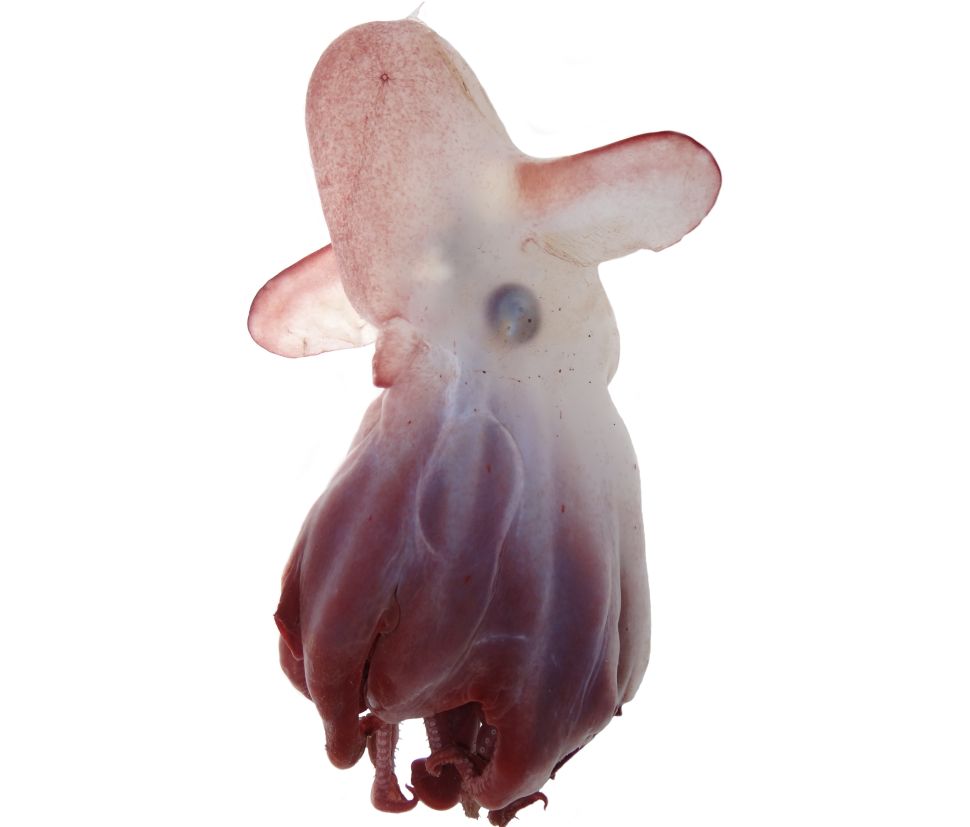
In May, researchers discovered a brand new species of Dumbo octopus (Grimpteuthis imperator), which has been nicknamed 'Dumbo Emperor'.
Researchers discovered this adorable creature when it got caught in a fishing net aboard the German research vessel Sonne during an expedition to the Aleutian Islands in the Bering Sea.
Dumbo octopus is so nicknamed because of its oversized fin, which looks like the ears of Dumbo elephant in Disney cartoons.
5. SpongeBob and Patrick in real life
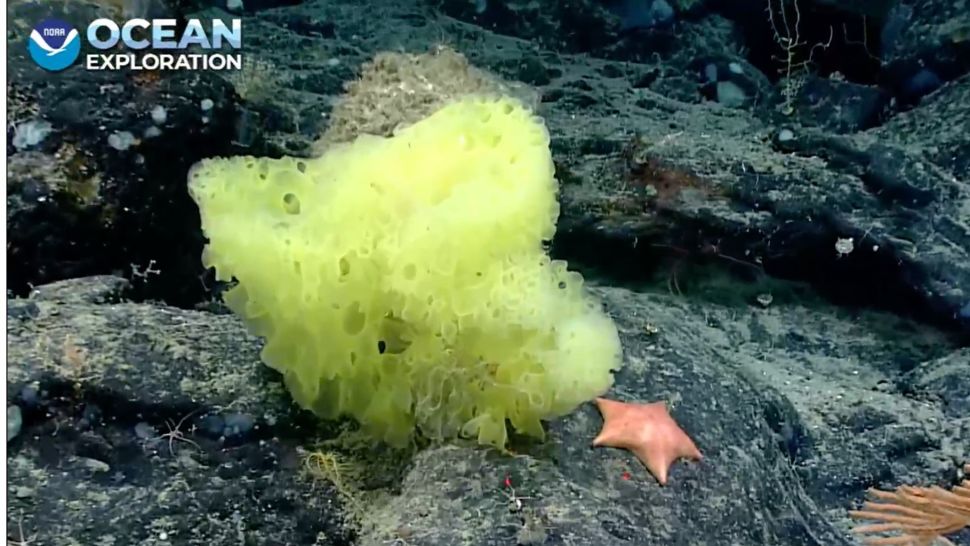
In August, NOAA released a humorous photo of the real-life replicas of SpongeBob Squarepants and Patrick Star from the popular animated series "playful sponge", side by side on the seabed. .
The image of sponges and pink starfish was taken by a submarine on July 27 at a depth of 1,885m during an expedition off the coast of New England.
'Sponges are in the genus Hertwigia and starfish are in the genus Chondraster,' says Christopher Mah, a marine biologist at the Smithsonian National Museum of Natural History. He added that the exact species has not been identified, they may even be a new species.
6. Squid 'alien'
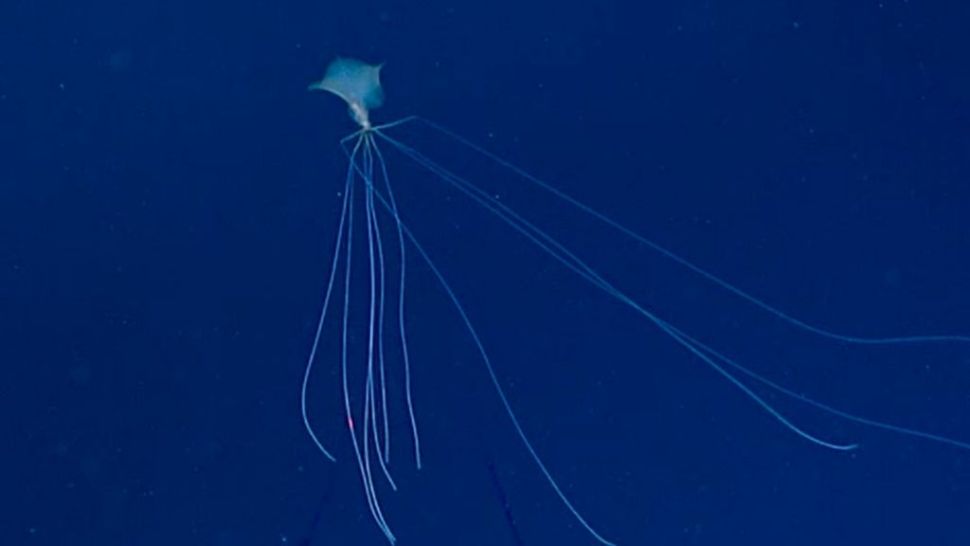
NOAA scientists in November discovered a rare large-fin squid (genus Mangapinna) during a deep-sea expedition in the Gulf of Mexico. This squid has a very strange body with huge, iridescent fins and super-long tentacles that bend like elbows.
To date, there have been less than 20 confirmed sightings of the squid since it was first discovered in 1998.
7. Giant ghost jellyfish
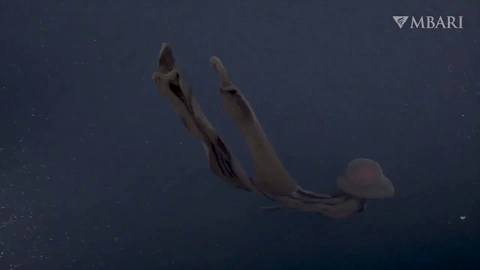
In November, MBARI released a rare video of a giant ghost jellyfish (Stygiomedusa gigantea). When scientists operated a robotic submarine at a depth of 975 meters in Monterey Bay, California, they discovered a giant jellyfish, with a 1-meter-wide head and 10-meter-long tentacles that curl like ribbons of ice.
Scientists also don't know much about this jellyfish, but they think it uses strangely shaped tentacles to trap prey and pull them into its mouth.
"The giant jellyfish was first discovered in 1899. Since then, scientists have encountered the species only about 100 times," MBARI said in a statement. Although rarely seen, this jellyfish has been found in nearly every ocean, except for the Arctic Ocean.
8. Ink 'photobomb'
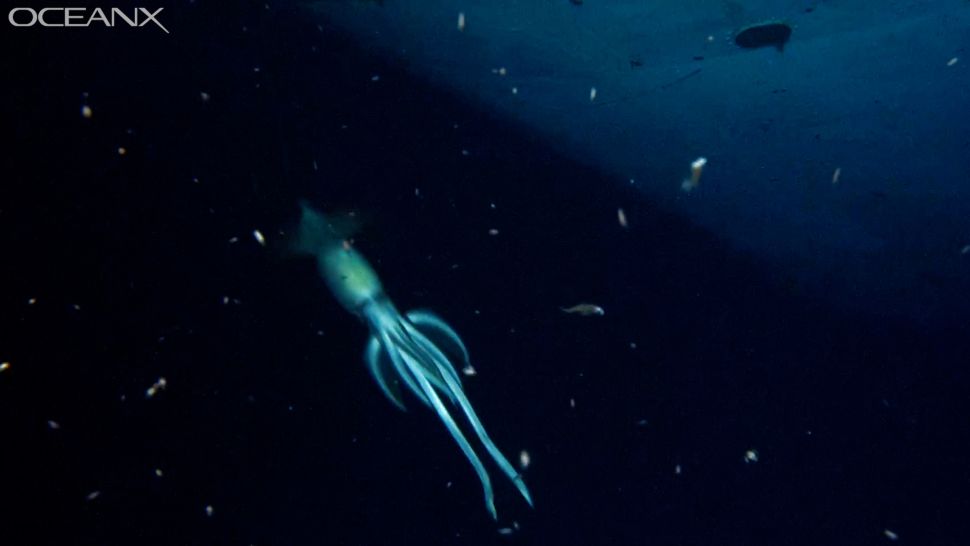
'Photobomb' is a word that refers to a person, an object, that accidentally or intentionally enters the frame of another subject, and sometimes this 'uninvited' character is even more noticeable than the main character. .
In October, when researchers were mapping the seafloor of the Gulf of Aqaba in the Red Sea, they discovered a nearby shipwreck from 2011. While filming the remains of the ship, the robot of the research team was constantly harassed by a purple-backed squid (Sthenoteuthis oualaniensis).
The shipwreck and the squid were found at a depth of about 850 meters. Scientists from OceanX think it's just one squid that keeps popping up in front of the camera, but it may not be the same one because it's hard to tell the difference. The researchers also say that the squid has a total body length of about 2 meters, which is close to the maximum size of this species.
9. The fish has a transparent head
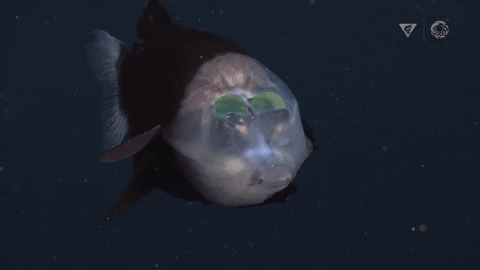
In December, MBARI researchers encountered the barrel-eye fish (Macropinna microstoma). This strange fish has a transparent head, which can be seen inside to see the brain, teeth, bridge of the nose and especially the sides of the eyeballs.
A probe submarine captured the strange creature at a depth of about 650m in the Monterey underground canyon. In particular, MBARI scientists have only discovered this species 9 times before, despite having experienced more than 5,600 dives in this fish's habitat.
10. The Sponge Path
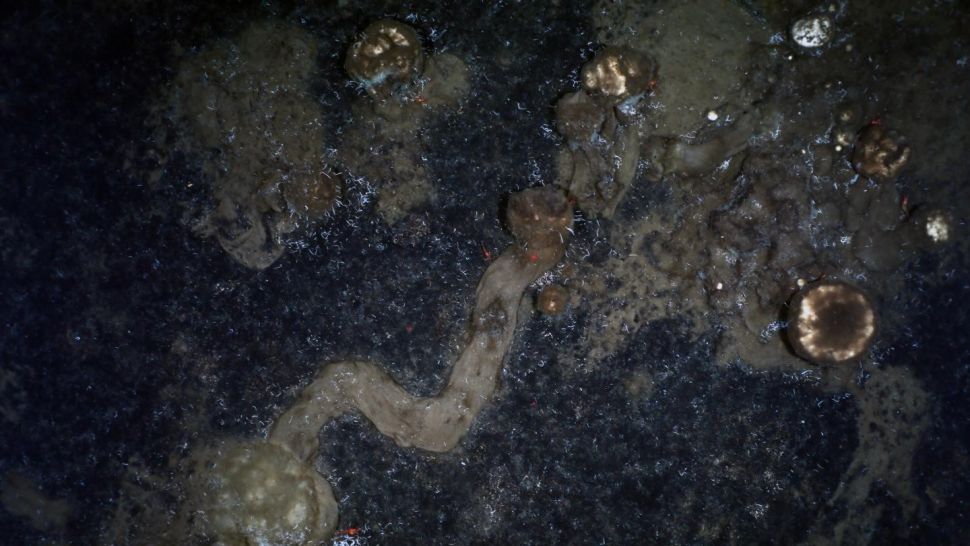
Although not a strange creature, but this discovery also surprised scientists.
In April, a new study revealed the first evidence of sponges crawling around the deep sea floor, after researchers captured a photo of the strange brown markings left by these creatures in the ocean. North Pole.
The sponge paths were first photographed in 2016 at Langseth Ridge - a little-studied area of the Arctic Ocean that is permanently covered in sea ice - at depths between 700 and 1,000 metres. It was then researched and published in April 2021.
The paths are made up of spines on which sponges can grow. Sponges appear to expand along these spines, then contract to a new location, to move. During this process, some of the spines break off, forming trails.
You should read it
- Who would have expected these strange creatures to live with humans on Earth in the future
- The most bizarre creatures are found by scientists under the sea floor of Australia
- Strange creatures hide deep in the ocean floor
- Mysterious creatures 'dance' strange dance when someone touches it
- The strange creature re-grows its head, turning its prey into water
- Mysterious sea creatures do not have eyes, mouth washes on American beaches
- Close-up of fish walking on the seabed surprised many people
- Catching a strange long-body shark like a snake, possessing up to 300 teeth and dating back to prehistoric times
- 20 animals are so strange that you don't believe they exist on Earth (part 2)
- 20 animals are so strange that you don't believe they exist on Earth (part 1)
- The bizarre blue creature has super long pink tongue
- Hybrid between giant spiders and scorpions, this furry exotic creature is the fear of many people
May be interested

NASA successfully launched the James Webb space telescope, a 'time machine' that gives us a look into the past of the Universe

Top 10 rare cat species in the world

11 interesting and quirky historical facts that make everyone think it's a joke

9 interesting knowledge that you never expected

How can eating poisonous mushrooms cause death?

NASA postpones plan to return humans to the Moon by 2024






 Strange creatures hide deep in the ocean floor
Strange creatures hide deep in the ocean floor The most bizarre creatures are found by scientists under the sea floor of Australia
The most bizarre creatures are found by scientists under the sea floor of Australia Catching a strange long-body shark like a snake, possessing up to 300 teeth and dating back to prehistoric times
Catching a strange long-body shark like a snake, possessing up to 300 teeth and dating back to prehistoric times Mysterious creatures 'dance' strange dance when someone touches it
Mysterious creatures 'dance' strange dance when someone touches it Who would have expected these strange creatures to live with humans on Earth in the future
Who would have expected these strange creatures to live with humans on Earth in the future The strange creature re-grows its head, turning its prey into water
The strange creature re-grows its head, turning its prey into water